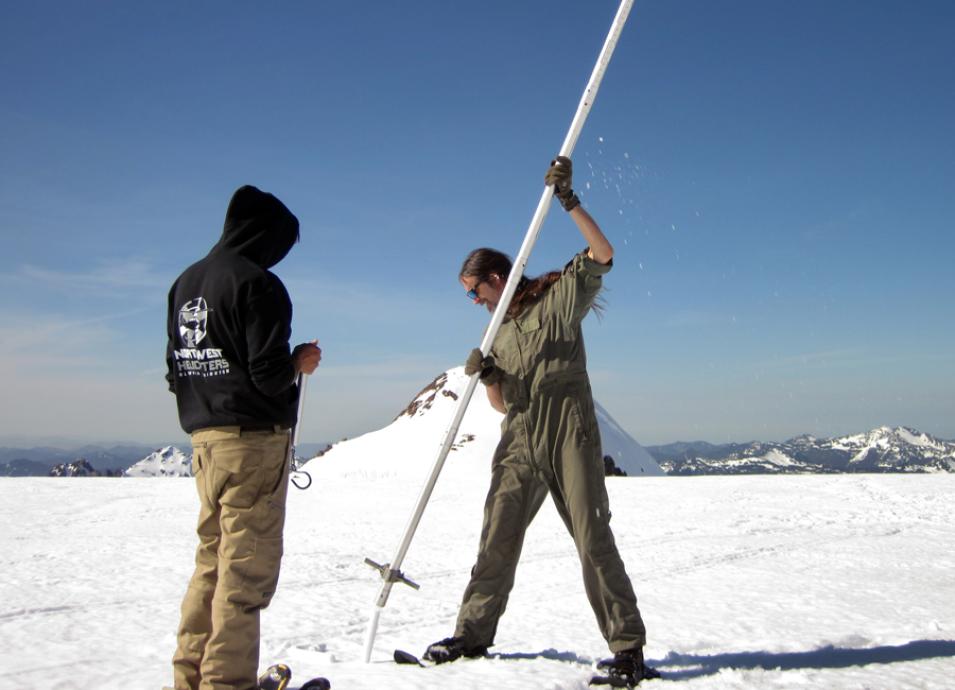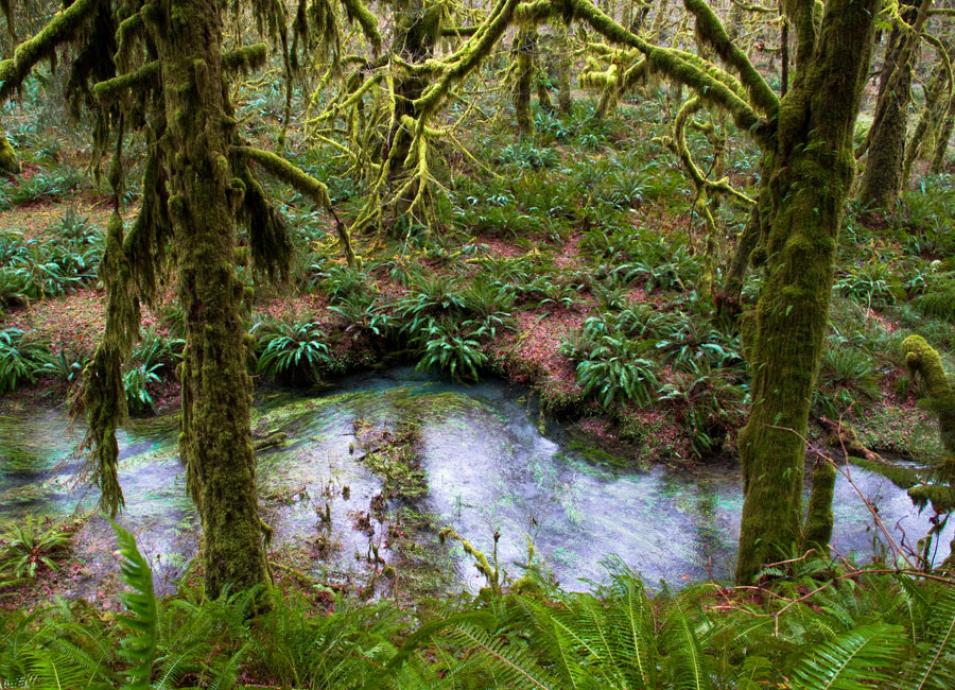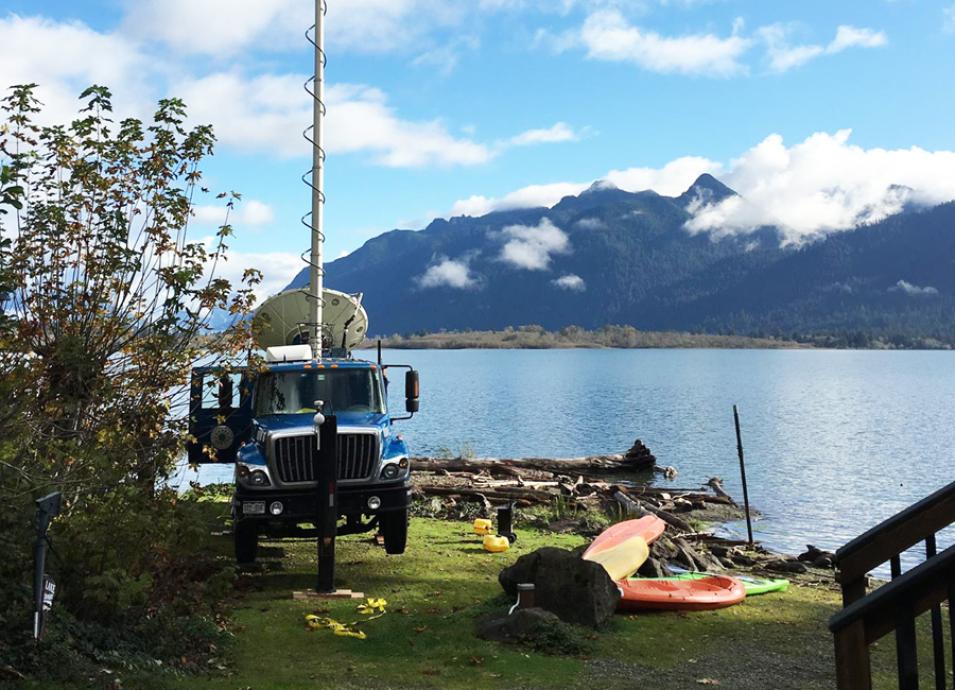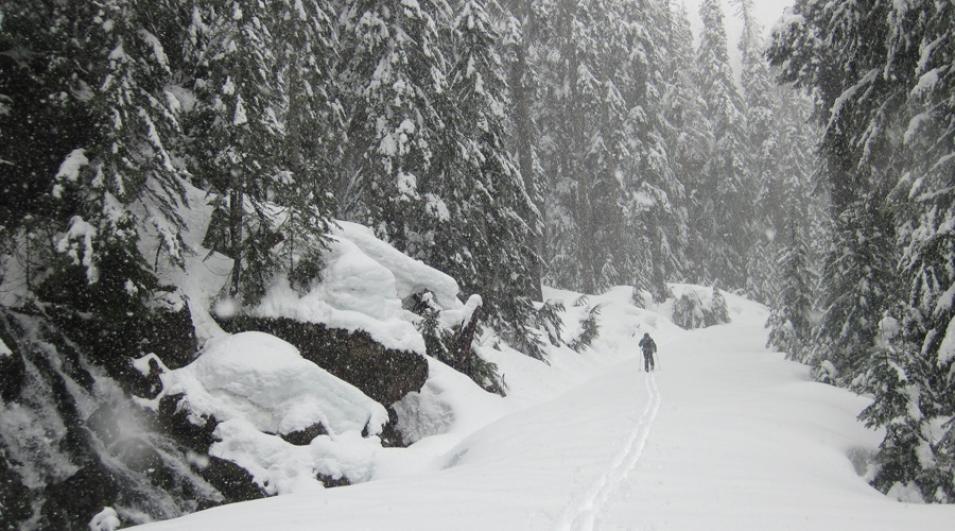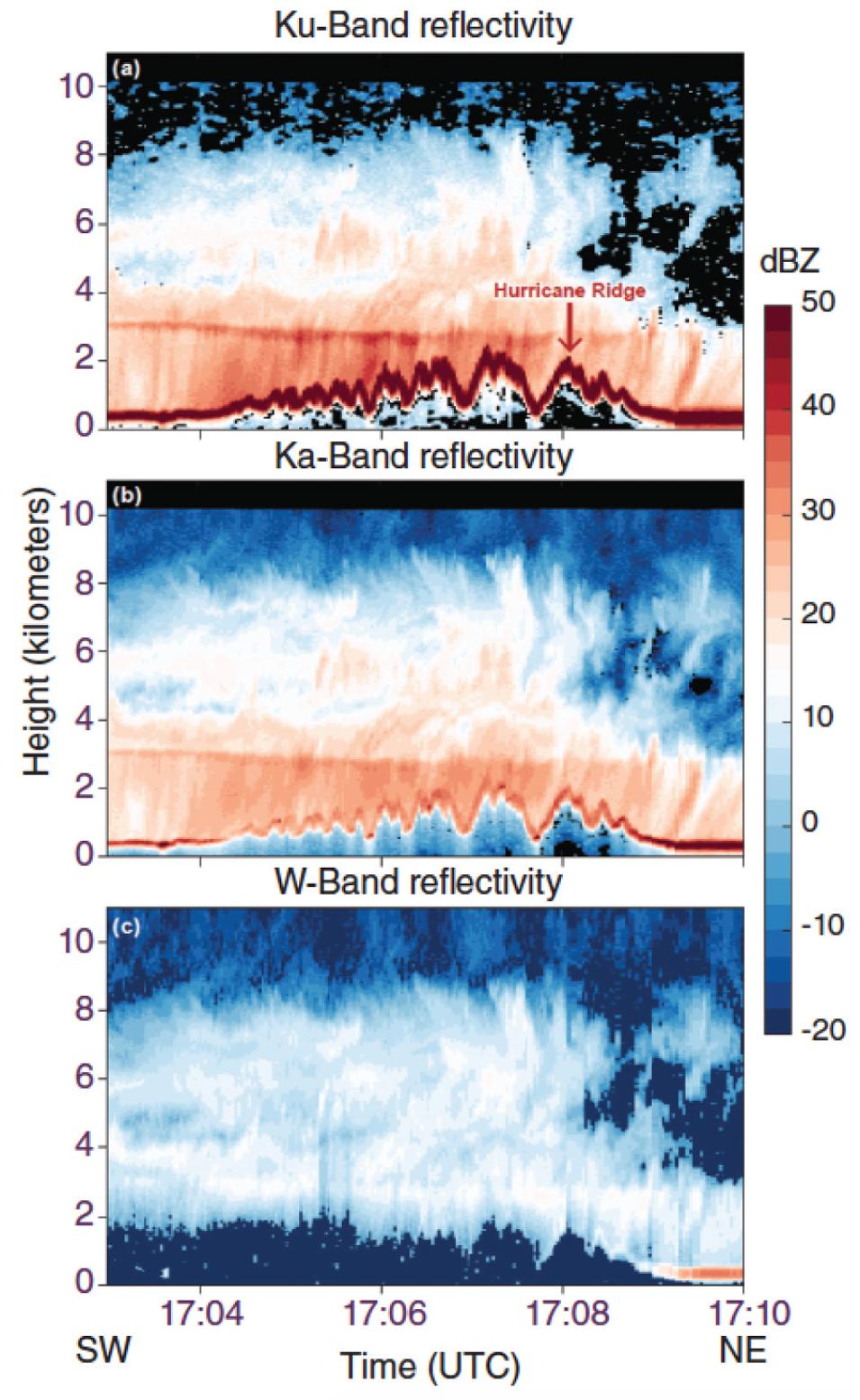After the fresh snow, the forest is quiet, save for the soft crunch of snowshoes. High in the rugged terrain of Olympic National Park, two hikers find the long metal snout of a scientific instrument barely poking through five feet of snow from an epic storm. It is no small job to shovel out the instrument, riding on sawhorse legs too short to keep its nose above the surface. Its camera can capture high-resolution video of falling snowflakes and raindrops—but not from beneath a snowdrift.
The instrument and its minders are part of a NASA mission to enable satellites to better measure precipitation in all types of terrain. When University of Washington professor Lynn McMurdie and colleagues designed the Olympic Mountains Experiment (OLYMPEX), they got what they wanted, and then some. They knew that the park’s mountainous landscape and stormy weather would be ideal for studying precipitation in the mountains. They had given slight thought to how they would get equipment into the remote mountain sites, and maintain it all winter. What they had not considered was how wind storms, heavy rains and flooding might nearly drown instruments and make trails to them impassible. Park Service scientist Bill Baccus said, “Nearly the entire area was a designated wilderness, with no roads, no electricity and strict regulations concerning installations and helicopter use. While the area had elements ideal for the study, it was not a very practical place to do the work.” The researchers were undeterred. “We need to know how much it rains, where, and when,” McMurdie said.
